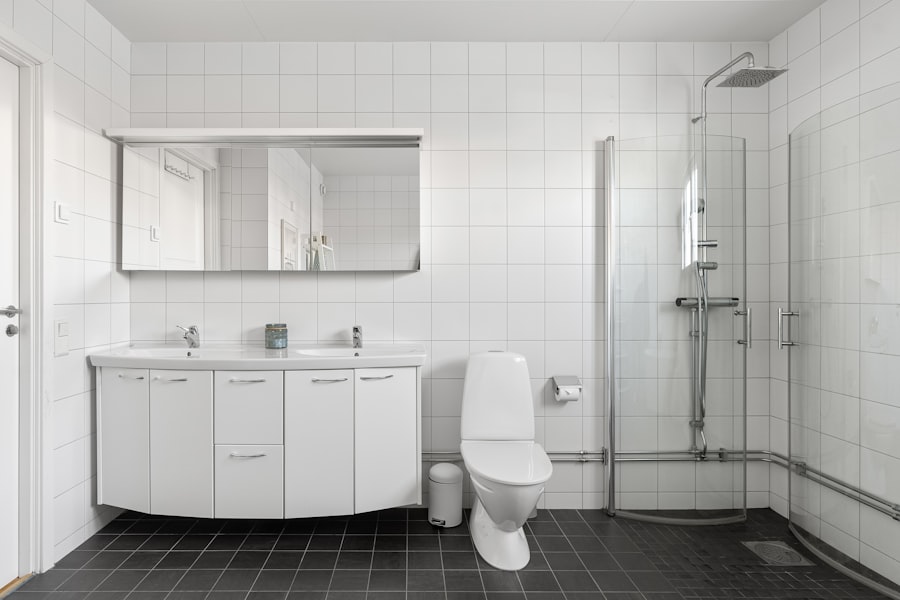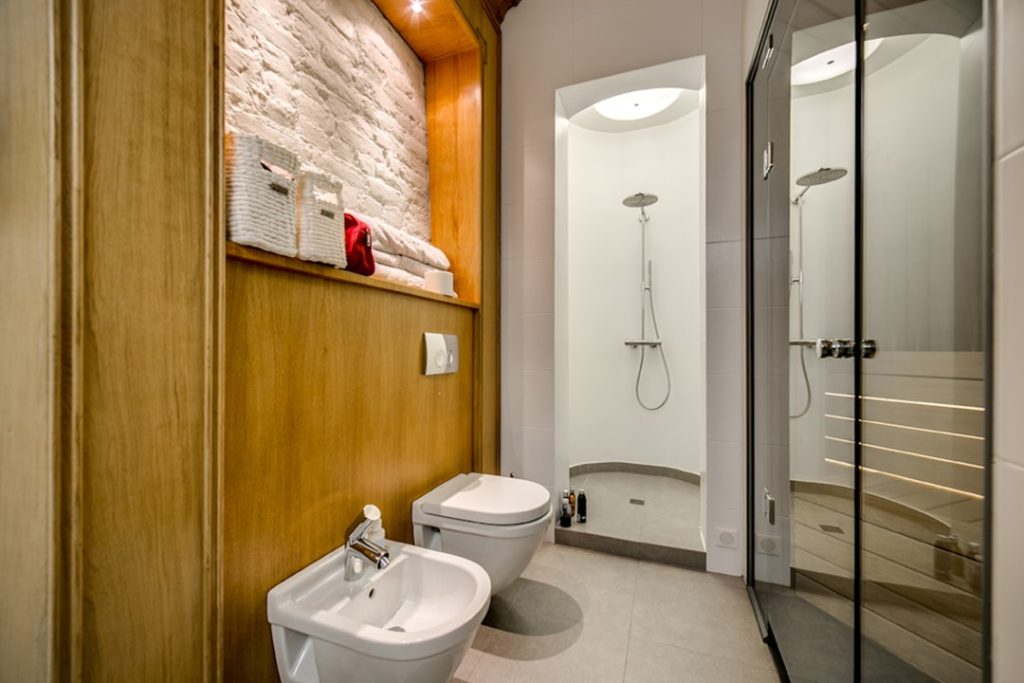Selecting the right contractor for your bathroom remodel is a critical step that can significantly influence the outcome of your project. The ideal contractor should not only possess the necessary skills and experience but also align with your vision and budget. Start by gathering recommendations from friends, family, or online platforms that specialize in home improvement.
Websites like Angie’s List or Houzz can provide valuable insights into contractors’ reputations, customer reviews, and portfolios of past work. Once you have a shortlist, it’s essential to conduct interviews to gauge their communication style, professionalism, and understanding of your project requirements. During the interview process, ask potential contractors about their experience with similar projects, their approach to problem-solving, and how they handle unexpected challenges.
Requesting references from previous clients can also provide a clearer picture of their reliability and quality of work. Additionally, ensure that the contractor is licensed and insured, as this protects you from potential liabilities during the remodeling process. A well-chosen contractor will not only execute your vision but also offer valuable insights and suggestions that can enhance the overall design and functionality of your new bathroom.
Key Takeaways
- Finding the right bathroom remodel contractor is crucial for a successful project
- Budgeting for your bathroom remodel is essential to avoid overspending
- Designing your dream bathroom involves considering your personal style and functionality
- Choosing the best materials for your bathroom requires research and consideration of durability and aesthetics
- Understanding the remodeling process helps you prepare for the timeline and potential challenges
Budgeting for Your Bathroom Remodel
Establishing a realistic budget is one of the most crucial aspects of planning a bathroom remodel. Begin by determining how much you are willing to spend and what features are most important to you. A typical bathroom remodel can range from a few thousand dollars for a basic update to tens of thousands for a complete overhaul with high-end finishes.
It’s essential to break down your budget into categories such as labor, materials, fixtures, and unexpected costs. This detailed approach will help you allocate funds appropriately and avoid overspending in any one area. When budgeting, consider the potential return on investment (ROI) for your remodel.
According to Remodeling Magazine’s Cost vs. Value report, mid-range bathroom remodels can recoup about 60-70% of their costs upon resale. This statistic underscores the importance of making informed choices about where to invest your money.
For instance, while luxury fixtures may be appealing, focusing on durable materials and efficient layouts can yield better long-term value. Additionally, setting aside a contingency fund—typically around 10-20% of your total budget—can help you manage unforeseen expenses that often arise during renovations.
Designing Your Dream Bathroom

Designing your dream bathroom involves more than just selecting colors and fixtures; it requires a thoughtful approach to layout, functionality, and aesthetics. Start by considering how you use your bathroom daily. Do you need a double vanity for busy mornings, or would a soaking tub be more beneficial for relaxation?
Creating a list of must-have features will help guide your design process. Utilizing design software or working with an interior designer can also facilitate visualizing your ideas and making adjustments before construction begins. Incorporating elements that reflect your personal style is equally important in the design phase.
Whether you prefer a modern minimalist look or a more traditional aesthetic, selecting complementary colors, textures, and materials can create a cohesive space. Lighting plays a pivotal role in bathroom design; consider layering ambient, task, and accent lighting to enhance both functionality and mood. Additionally, integrating smart technology—such as motion-sensor faucets or heated floors—can elevate your bathroom experience while adding a contemporary touch.
Choosing the Best Materials for Your Bathroom
| Material | Pros | Cons |
|---|---|---|
| Ceramic Tile | Durable, water-resistant, wide variety of styles | Grout can be hard to clean, cold to the touch |
| Porcelain Tile | Highly durable, water-resistant, low maintenance | Can be expensive, difficult to install |
| Natural Stone | Elegant, unique, adds value to the home | Requires regular maintenance, can be expensive |
| Vinyl Flooring | Affordable, easy to install, water-resistant | Not as durable as other materials, can be prone to damage |
| Laminate Flooring | Affordable, easy to clean, wide variety of styles | Not as water-resistant as other materials, can be prone to damage |
The selection of materials for your bathroom remodel is paramount to achieving both durability and style. Bathrooms are unique spaces that experience high humidity levels, so choosing moisture-resistant materials is essential. For flooring, options like porcelain tile or luxury vinyl plank are popular due to their water resistance and ease of maintenance.
When it comes to countertops, quartz is an excellent choice as it combines durability with a wide range of aesthetic options. Cabinetry is another area where material choice can significantly impact both function and appearance. Solid wood cabinets offer timeless appeal but may require more maintenance than engineered options like plywood or MDF with laminate finishes.
Additionally, consider the sustainability of your materials; eco-friendly options such as bamboo or recycled glass can contribute to a greener home while still providing aesthetic appeal. Ultimately, the right materials should align with your design vision while ensuring longevity in a space that endures daily wear and tear.
Understanding the Remodeling Process
Understanding the remodeling process is crucial for managing expectations and ensuring a smooth renovation experience. Typically, the process begins with an initial consultation where you discuss your vision with the contractor. This phase often includes measurements, design discussions, and budget considerations.
Once plans are finalized, permits may be required depending on the scope of work; this step is essential for compliance with local building codes. Following permit approval, the actual construction phase begins. This stage can involve demolition of existing fixtures, plumbing adjustments, electrical work, and installation of new materials.
It’s important to maintain open communication with your contractor throughout this process to address any concerns or changes that may arise. Regular site visits can also help you stay informed about progress and ensure that the work aligns with your expectations. Understanding that remodeling can be disruptive will help you prepare for temporary inconveniences while ultimately leading to a beautifully transformed space.
Maximizing Space in a Small Bathroom

Maximizing space in a small bathroom requires creativity and strategic planning to ensure functionality without sacrificing style. One effective approach is to utilize vertical space; installing shelves above the toilet or using tall cabinets can provide additional storage without encroaching on floor space. Floating vanities are another excellent option as they create an illusion of more room while offering storage underneath.
Incorporating multi-functional furniture can also enhance usability in compact bathrooms. For instance, consider a mirrored cabinet that serves as both storage and a vanity mirror or a shower-tub combo that maximizes bathing options without requiring extra square footage. Additionally, using light colors on walls and fixtures can make the space feel larger and more open; mirrors strategically placed can further amplify this effect by reflecting light and creating depth.
Incorporating Energy-Efficient Features
Incorporating energy-efficient features into your bathroom remodel not only benefits the environment but can also lead to significant savings on utility bills over time. Start by selecting water-saving fixtures such as low-flow toilets and faucets that reduce water consumption without sacrificing performance. According to the Environmental Protection Agency (EPA), replacing older toilets with high-efficiency models can save homeowners up to 13,000 gallons of water annually.
Lighting is another area where energy efficiency can be improved. Opting for LED bulbs instead of traditional incandescent lights not only reduces energy usage but also has a longer lifespan, making them a cost-effective choice in the long run. Additionally, consider installing motion sensors or dimmer switches to further enhance energy savings by ensuring lights are only used when needed.
By integrating these features into your remodel, you contribute to sustainability while enjoying lower operating costs.
Adding Luxury Touches to Your Bathroom
Elevating your bathroom with luxury touches can transform it into a personal oasis that reflects sophistication and comfort. One way to achieve this is through high-end fixtures such as rainfall showerheads or freestanding soaking tubs that create a spa-like atmosphere. Investing in quality hardware—like polished chrome or brushed nickel faucets—can also add an elegant finish to your space.
Incorporating thoughtful details such as heated flooring or towel warmers enhances comfort during colder months and adds an element of indulgence. Custom cabinetry with intricate designs or built-in shelving for displaying decorative items can further elevate the aesthetic appeal of your bathroom. Additionally, consider adding natural elements like plants or stone accents to create a serene environment that promotes relaxation and rejuvenation.
By focusing on these luxury touches, you can create a bathroom that not only meets functional needs but also serves as a personal retreat from daily life.



